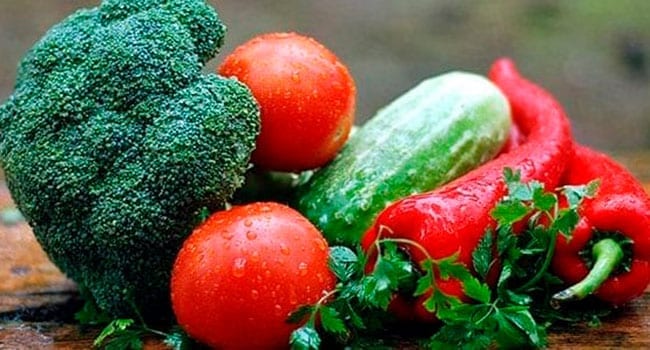 The Food Price Report 2019 suggests that vegetable prices will go up by as much as six per cent next year. That’s significant because, unlike meat or fish, fewer alternatives exist when it comes to replacing vegetables.
The Food Price Report 2019 suggests that vegetable prices will go up by as much as six per cent next year. That’s significant because, unlike meat or fish, fewer alternatives exist when it comes to replacing vegetables.
According to the report, recently released by Dalhousie University and the University of Guelph, El Nino will be to blame, since Canada imports a great quantity of vegetables from regions prone to drought during El Nino periods, including the western United States and northern Mexico. And 2019 will be an El Nino year.
The six per cent increase is in addition to the 4.8 per cent hike in vegetable prices in 2018.
Given that we could experience a second consecutive year of significant price increases, many wonder whether eating local produce is a better option.
Global supply chains have allowed us to become more efficient and given consumers more choices and a broader selection of affordable food products. But eating local has its advantages, too.
The environmental case for eating local is almost undisputed. You can significantly reduce your carbon footprint just by increasing your locally-grown food consumption.
And local foods prices are consistently priced, if generally higher. Price is much less volatile when short-circuit distribution systems are involved. The number of intermediaries is limited compared to global food chains, which are exposed to environmental fluctuations and differing economic conditions, which can all lead to greater cost variations.
Extensive, large-scale networks always give markets what they need at the right time, at the right place, at a decent price, and with an acceptable level of quality – until something goes terribly wrong. A single failure can lead to huge disruptions affecting many people.
A case in point is the romaine lettuce disaster in November. Grown in California and Arizona, fresh lettuce is delivered to Canadians at a decent price. But with the recent E.coli outbreak in romaine lettuce, not only did people get sick, but the prices of leafy greens in Canada skyrocketed.
The Canadian Food Inspection Agency prevented romaine lettuce from entering Canada. When that happens, importers must procure similar products elsewhere, likely at higher cost, to meet consumer expectations. Consumers want their leafy greens, even in winter, no matter what.
Eventually, the situation will go back to normal and most will forget about the romaine lettuce crisis. That’s the nature of market failures. Systems adapt and improve over time.
But many people in the marketplace envy the stability and sustainability of local food systems. Unlike global supply chain systems, transparency is a non-issue since most producers know each other.
Buying locally-grown vegetables can also give some peace of mind to shoppers. You’ll likely pay more but the prices are mostly predictable. Simplicity has its virtues but it also comes at a cost. Local foods typically cost 20 to 40 per cent more than the cheapest imported varieties available in the same marketplace.
Research shows that city dwellers are more likely to favour locally-grown or manufactured food products, for the simple fact that agriculture is often a distant concept to them. Many Canadians have never been to a farm. Buying local is the one way to feel a real connection with agriculture and farmers.
There’s also more wealth in cities than rural communities. So although price is still a consideration for urban dwellers, it’s more important to less wealthy consumers in rural areas.
That’s where global supply chains come in.
Given that Canadians have access to the fifth most affordable food basket in the world, relative to household income, global supply chains appear to be serving them well.
And getting our vegetable fix from all over the world isn’t such a bad idea. Our nordic climate doesn’t give us many options. But global supply chains come with their fair share of risks, which in turn generate price volatility.
At the same time, buying local produce can be critical to our agri-food economy. In many parts of the country, local vegetable production is a priority, through vertical farms, greenhouses using novel technologies and other initiatives.
Access to more locally-grown vegetables, while striking a balance between local and global, will be key.
But price hikes affecting vegetables are a challenge for many, especially those with limited means. That means visiting the freezer aisle may not be a bad idea. It may not taste the same as fresh, but you’ll get the same nutritional value from frozen veggies.
Amidst all this, there is one piece of good news: the Food Price Report 2019 authors suggest that the cost of meat and fish products will drop next year by up to three per cent. This is a first decline in fish and meat prices in the study’s nine-year history.
So meat lovers can do a happy dance around the barbecue next summer. Just don’t forget your veggies.
Dr. Sylvain Charlebois is senior director of the agri-food analytics lab and a professor in food distribution and policy at Dalhousie University.
Sylvain is a Troy Media Thought Leader. Why aren’t you?
For interview requests, click here. You must be a Troy Media Marketplace media subscriber to access our Sourcebook.
The views, opinions and positions expressed by columnists and contributors are the author’s alone. They do not inherently or expressly reflect the views, opinions and/or positions of our publication.

